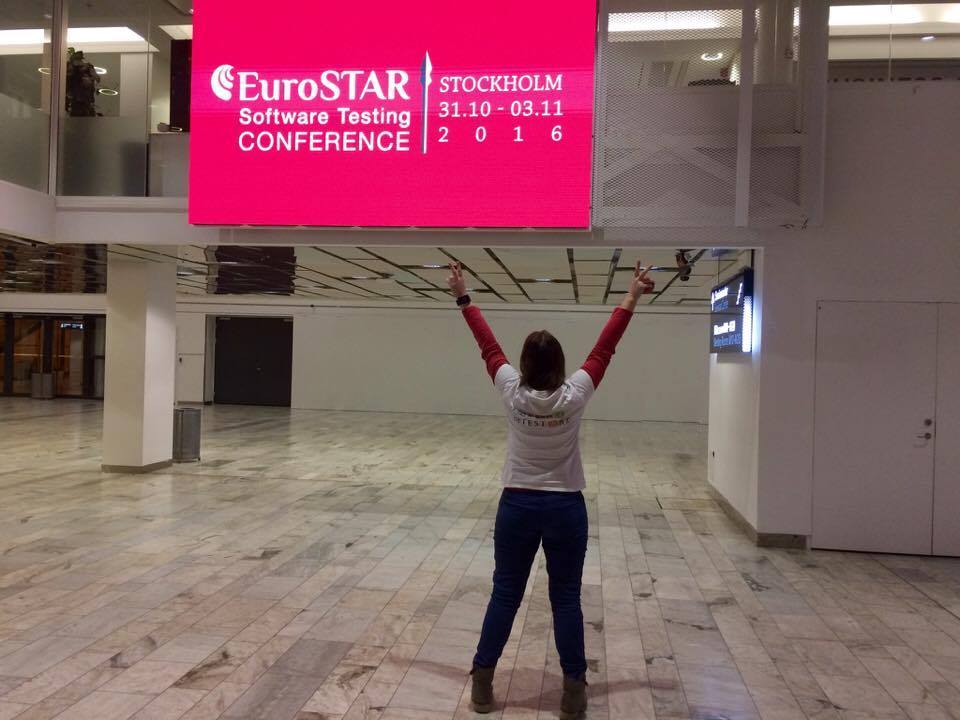Here I am, last evening in Stockholm, a bit blue that the conference is over.
Last conference day went by really quickly, with some talks in the first part and games in the afternoon.
I joined Zeger Van Hese’s talk on the power of doubt. He walked us through his journey of embracing skepticism, presented the skeptic’s toolbox and ended with its implications in testing. Questioning, rejecting certainties, setting ourselves in a default “I don’t know yet” mode are helpful for testers. I will come back in a future post with the insights it triggered me. In the meanwhile, you should know that Zeger’s do-over session was recorded and is already available online, so you could check it yourself. Warning! It sets a record for the number of satan mentions in a testing presentation. But you should already be skeptical about this notification.
Another thing I did today was to solve a couple of challenges in the test lab. I couldn’t have left without experimenting in the most playful, colourful and interactive area from the conference. One challenge was to identify the pattern of a robot taking various paths, depending on the colour it started from. Looking back retrospectively, I see some similarities in approaching this challenge and the way I have been testing lately. As I was discovering pieces of information, I was writing them down, distinctively marking them; the same with the input and the questions that I had, in different sections and with different marks. In the end, my notes and findings looked like a paper version of the sessions reports that I am producing when testing software. Looks like SBTM is becoming my natural way of taking notes when performing investigations. I didn’t transfer the timebox characteristic, though: I was so focused that the thing that eventually made me raise my head from my playground was a… forklift taking down parts from the expo stands.
Another challenge I joined was one involving coins in which my colleague Alexandra was already engaged.
We weren’t able to find the pattern and there Michael Bolton cut into; he had already mentioned his availability to help participants.
There’s one day left at #esconfs. Participants: don’t be afraid to approach speakers. They WANT to hear from you about your experience.
— Michael Bolton (@michaelbolton) November 2, 2016
Have I mentioned that I have not played experiential games lately? Yes, I did. Michel reminded us that the learning objective of a puzzle like the one we were trying is not necessarily finding the pattern, but that an intermediate solution was also relevant for the learning experience itself. He made an analogy with the testing challenges we are facing and went further with an example of a CISCO exam in which candidates have to solve a router problem. They pass even if they don’t manage to fix the problem, but prove reasonable attempts, that they can articulate. However, if they do fix the problem, but can’t provide a coherent walkthrough of the solution, they fail. After listening to him, I finally realized the value of his advice on Twitter.

This moment also put an emblematic end for my learning experience at EuroSTAR 2016. At least, a formal ending, as there are many insights and ideas to follow up. You’ll read more on my highlights from this event during the following days.
If you want to read my previous posts from the conference, here are the links: